Unveiling the Mysteries of How Honey Bees Produce Wax
When most people think about honey bees, they mostly are interested in the honey bees produce.
However, bees make another important substance known as beeswax. Prized for its high quality, beeswax and comb is another substance that bees can make.
Beeswax can be used for a variety of purposes. It's often used in candle making, cosmetics, skincare, and even some food products.
Honey bees produce wax through special glands on their abdomens, which they then chew and manipulate with their mandibles into the intricate hexagonal shapes of honeycomb cells.
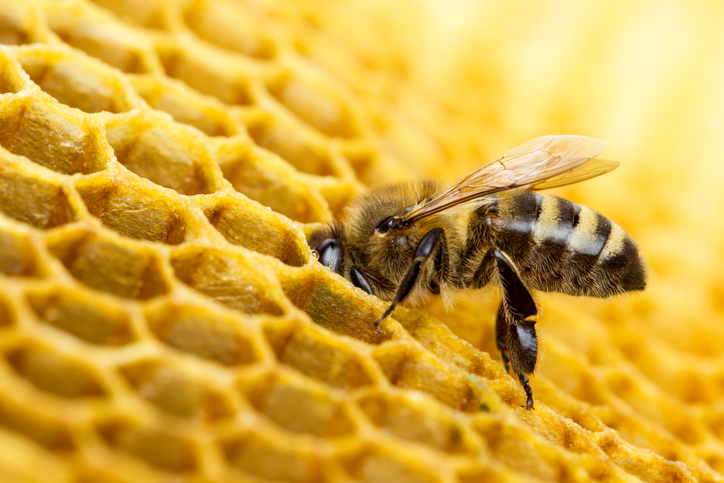
How Beeswax is Made
This should provide a better understanding of beeswax and the combs that they form...
What exactly is this substance though and how to bees make it?
The wax that the worker bees use to build the honeycomb is actually made by their own bodies in their wax producing glands.
When bees are approximately 12-20 days old, they develop a gland in their abdomen that can produce wax. These wax glands convert the sugar from honey into a wax-like, wax scale substance that is secreted in flakes on their abdomen.
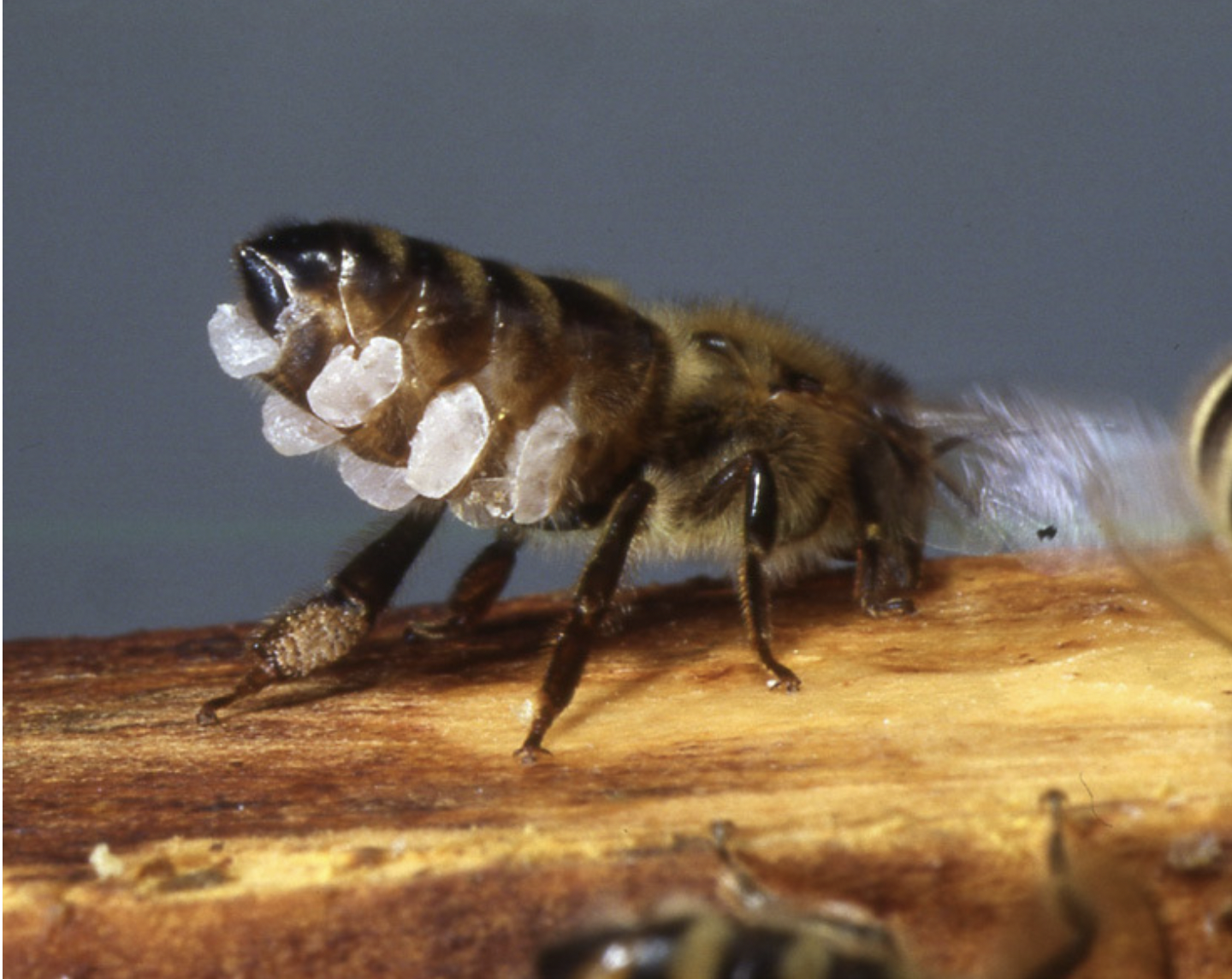
Bees secreting wax: the wax emerges from the bee’s abdominal glands and solidifies into small platelets
Photo © A Spürgin
After being secreted, these wax scales are collected by other worker bees who chew it up. The wax is then used to build the honeycomb. It takes a fair amount of honey to turn into wax though, which means that building a comb can take a significant amount of time.
In fact, beekeepers estimate that it will take six pounds of honey to make just one pound of wax. Bees also produce the maximum amount of wax for that eight-day time period. After they're over the age of 20 days, their production begins to decline.
Converting Wax into Comb, Chaining
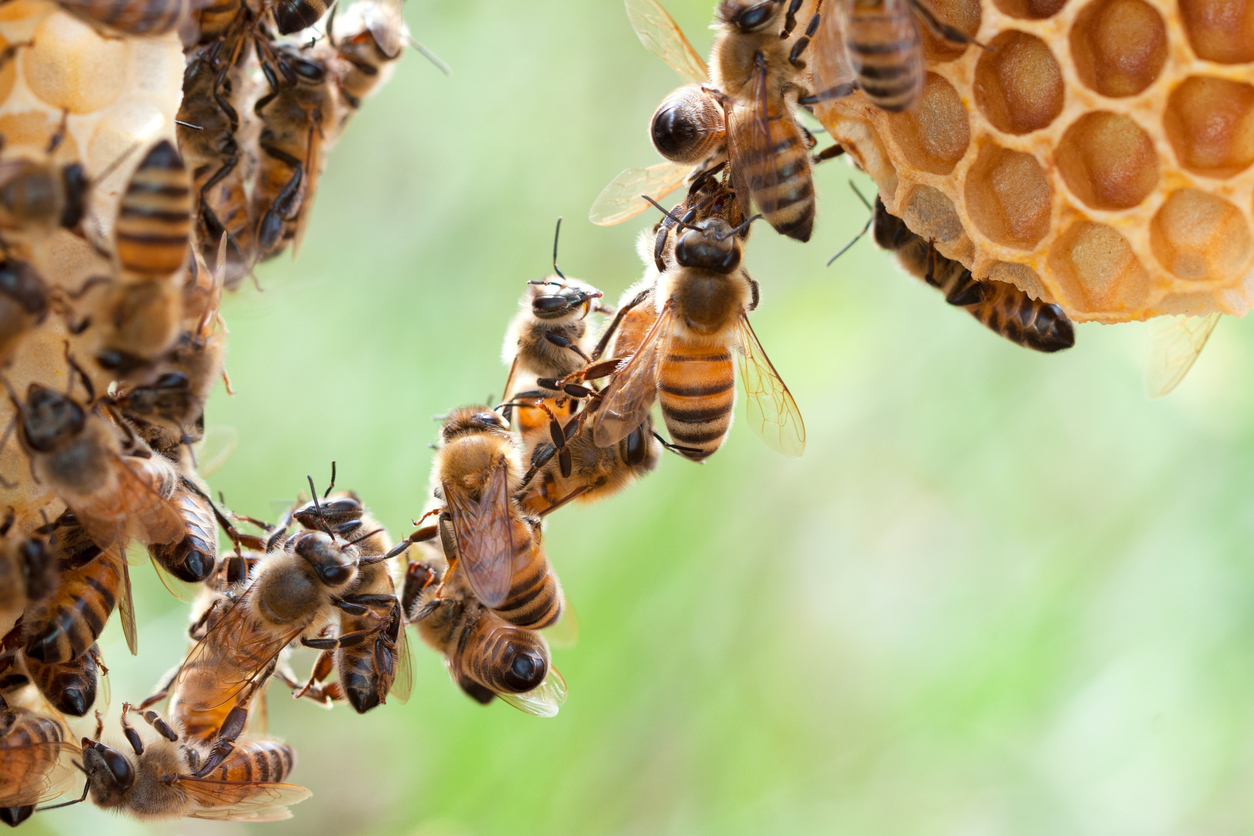
Photo © Canva
As many people have noticed, the comb is a hexagonal shape cell that appears to be extremely precise. The bees are able to produce these exact shapes using the wax.
Chewing up the wax, they mix in enzymes in their saliva. The saliva in addition to the warm temperature in the beehive creates a soft, malleable product. The clay-like substance is then used to build the comb in a hexagonal shape.
The worker bees instinctively make the natural u-shaped comb that people are used to seeing. The wide top where the comb is attached allows for the largest surface area that will hold the comb secure. As it narrows at the bottom of the u-shape, it will be lighter, which puts less tension on the attached surface.
Beekeepers will often use frame foundation inserts that are already molded into a hexagonal shape. This allows for easy removal of the comb and also contributes to the more perfectly formed honey cells. However, bees will occasionally deter from this form and may build a more natural honeycomb. This makes it more difficult for a beekeeper to pull the frames from the hive. It may lead to greater damage of the honey comb. I do not use frame foundation, I allow them to make what they want, and where in the hive.
Although the hexagonal shape is not natural for the bees, it allows for the greatest storage area. Bees naturally create the curved shape of the circle. A circle of all the container shapes possible will store the largest volume of honey.
However, the
curved shape will allow for gaps and may limit space
for honey. To maximize the space, some beekeepers prefer the hexagonal shape.
Additionally, this shape makes the comb stronger as well.
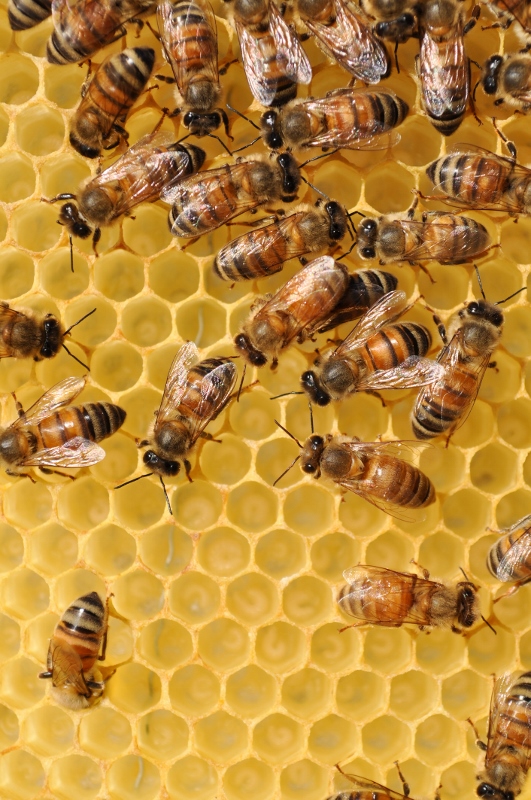
Honeycomb Function
The comb is used for
a variety of purposes. Its primary purpose is storage though. The comb is a
waterproof storage vessel that can be filled with honey and then stored while
the honey matures. The comb is also used for egg laying. Eggs can be placed
inside the comb where they will be protected and out of the way of the mature
bees. When harvesting honeycomb, beekeepers try to harvest only the comb that
contains honey.
Does the Wax Melt?
The wax can melt at
high temperatures but bees are good at regulating temperature. On hot summer
days, they will use a fanning motion with their wings to cool the hive. In some
cases, the will also leave the hive to reduce the body heat factor. The hive
must be kept at a certain temperature as it will melt at high temperatures and become brittle during cold weather. If you've ever wondered how bees make wax
and build honeycomb, this is an overview of this process. Bees are amazingly
complex creatures with a variety of skills. Both the honey and the wax that
they produce is valued. Beekeepers will harvest both periodically.
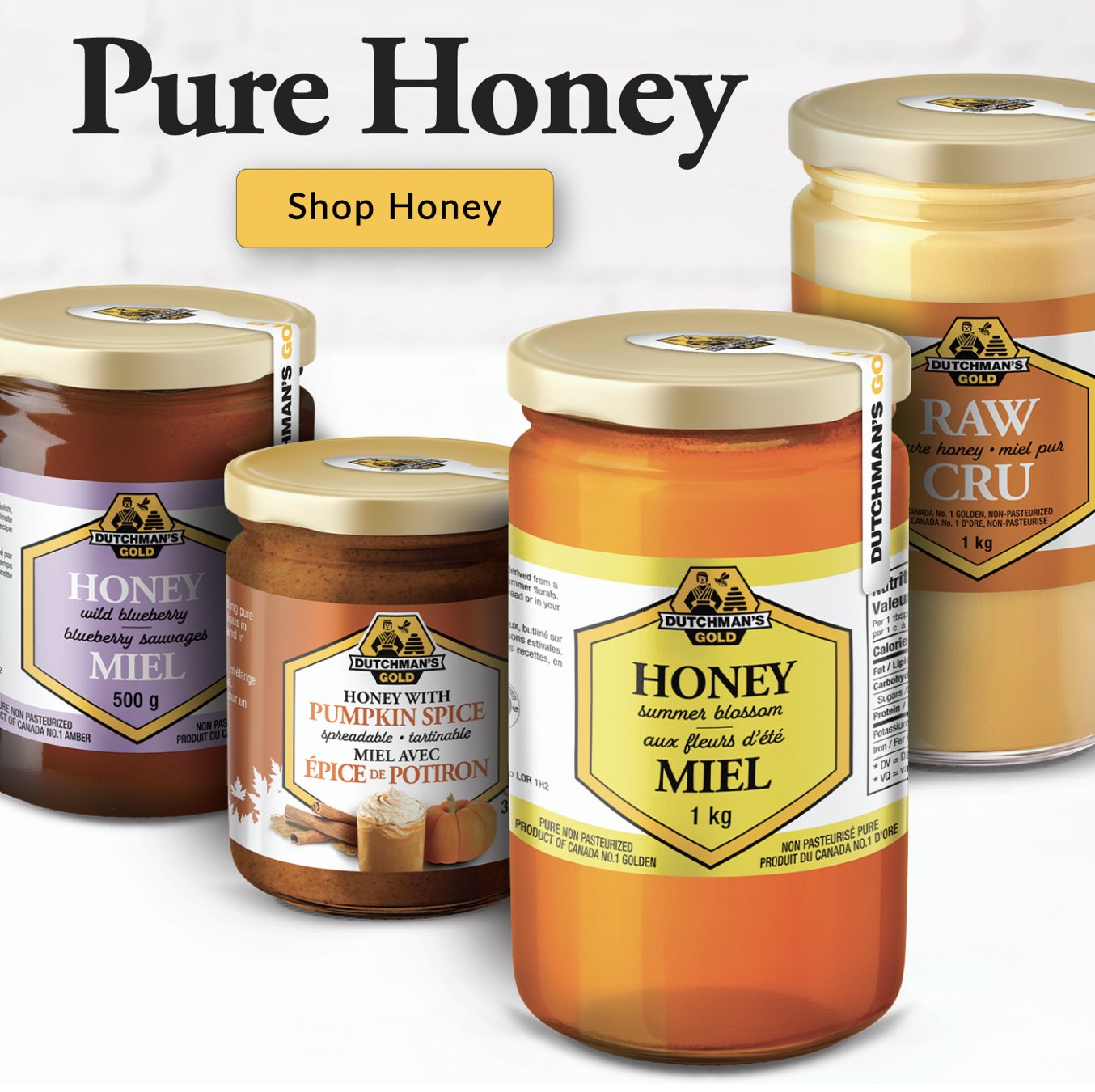



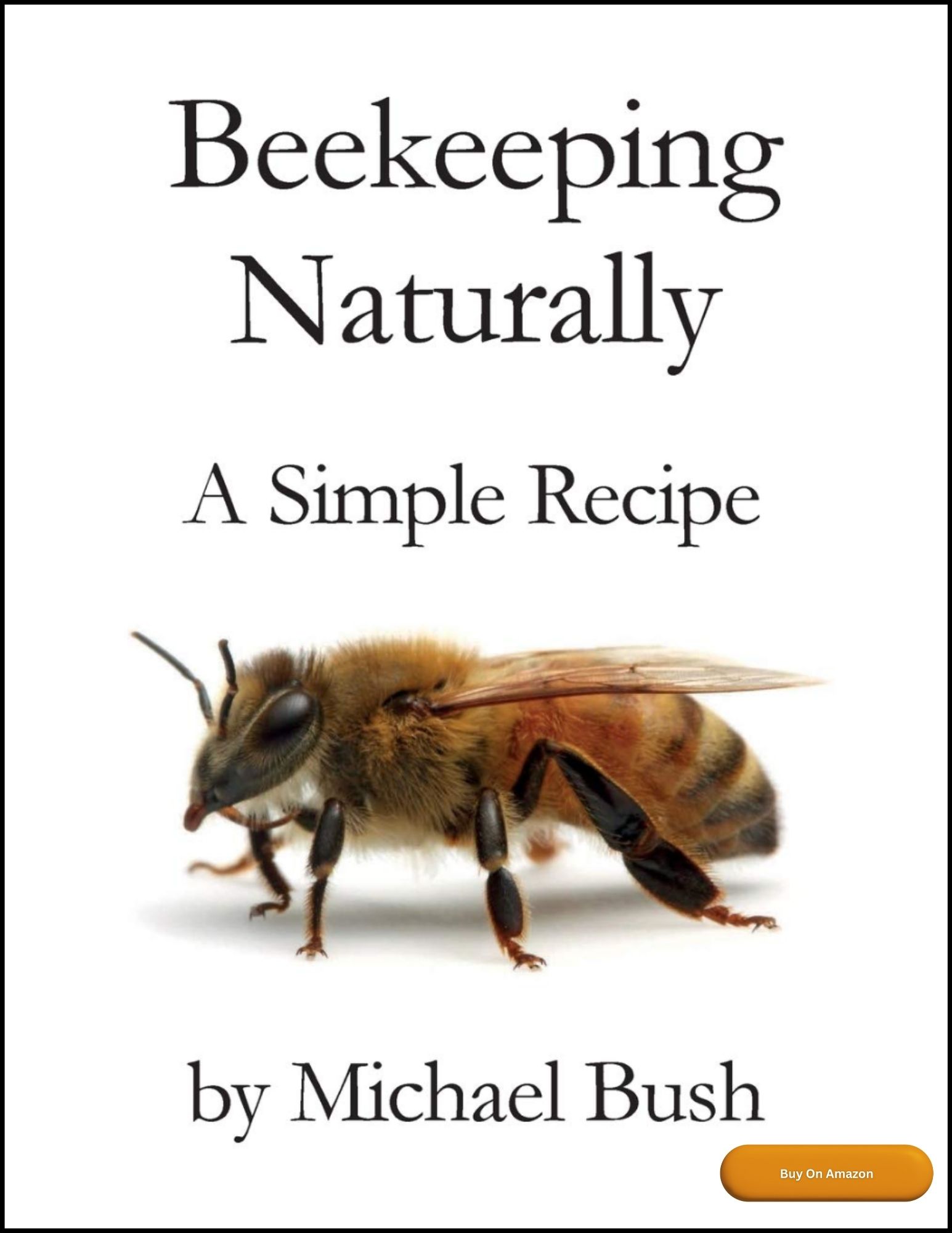
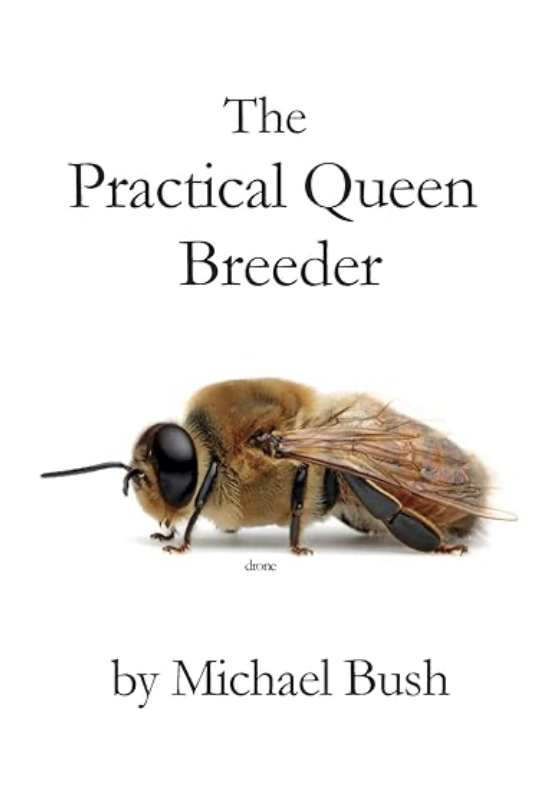

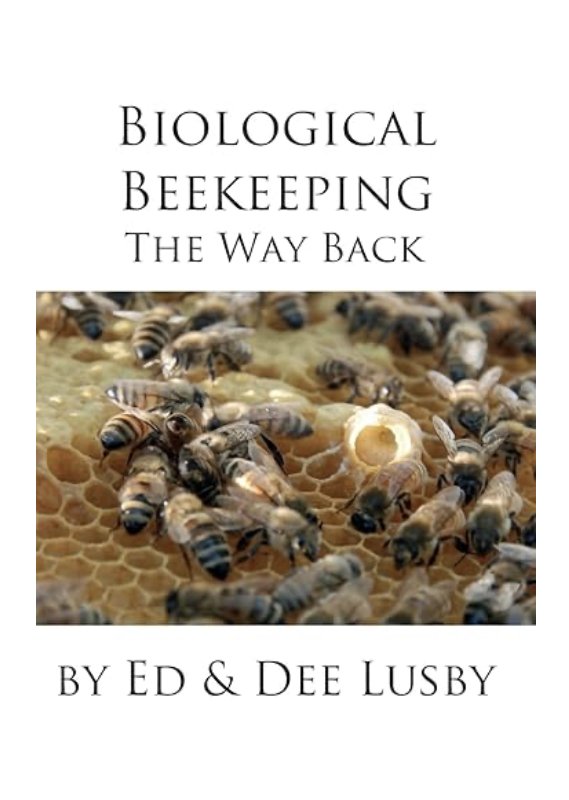

New! Comments
Have your say about what you just read! Leave me a comment in the box below.